Due to the high demand, the only available hay is often of low quality and very expensive. Now might be the time to plan a forage program that will sustain your herd through the next drought.
Regardless of how well grazing is managed on range and pasture, supplemental feed will eventually be needed during long-term severe drought.
Storage of harvested forage could be an important part of a drought contingency plan, and several options are available.
Hay is the most common type of harvested forage and the one in which most of us are more familiar. Other choices are haylage and silage.
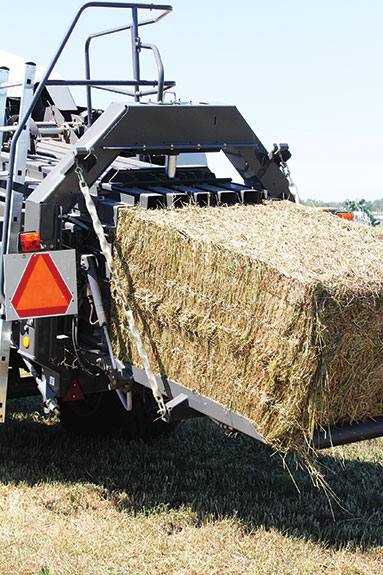
Hay
“Hay harvested at the proper stage of plant growth and undamaged by weather provides nutrients at a minimal cost compared to other high-quality supplemental feeds,” says Vanessa Corriher, forage specialist with Texas A&M AgriLife Extension Service at Overton.
“Factors that should be considered when buying hay include bale weight and nutrient content, such as percent total digestible nutrients (TDN) and percent crude protein (CP).
Other factors are forage condition, bale shape and density, forage species, potential toxic compounds such as nitrates or prussic acid, and palatability.”
“It is necessary to properly store hay out of the weather to minimize dry matter (DM) loss and loss of stored nutrients,” says Larry Redmon, forage specialist with Texas A&M AgriLife Extension Service at College Station.
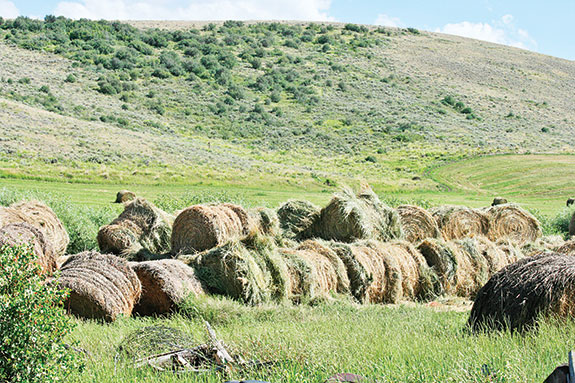
“If round bales are to be stored outside, they should be placed in rows oriented north and south with square ends butted together.
Ideally, the rows should be two to three feet apart running up and down a slight slope to facilitate drainage.
Round bales should also be stored on a concrete pad, if possible, or other sites that minimize moisture absorption from the ground.
Suggestions include putting round bales on a gravel pad, crossties or pallets. A non-flammable buffer around the bales helps minimize potential for loss in case of a grass fire.”
If hay is stored properly, it will last indefinitely and provides good drought insurance.
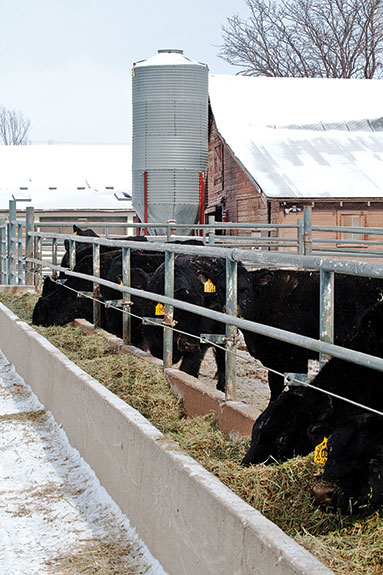
“Hay should be fed in a ring, bunk or manger to minimize waste,” says Redmon.
“If animal access to the forage is not limited, livestock will render much of the hay useless by trampling, urinating, defecating and/or bedding on it.
The result of the wasted forage significantly increases hay cost.”
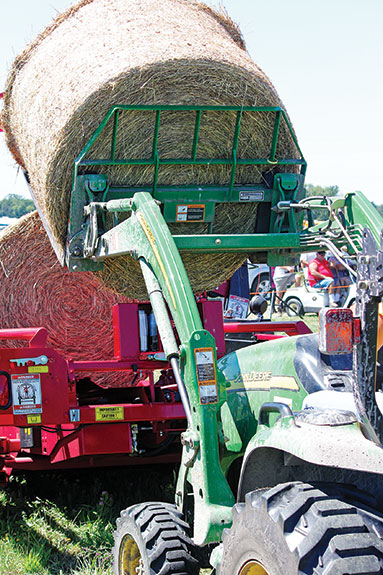
Haylage
“Haylage, also known as round bale silage, is another approach to preserving forage,” says Michelle Shooter from the North Carolina State University Cooperative Extension.
“Haylage is simply forage baled at higher moisture content than dry hay and then stored in a sealed plastic wrap.
Because of the high moisture level and airtight environment, the forage ferments and is preserved by acid production during fermentation.
There are certain advantages and disadvantages of haylage over other forage harvesting and preservation systems.”
“Haylage generally has greater nutritive value than hay harvested from the same forage type and at the same maturity stage,” says Corriher.
“This is because of nutrient losses during field curing of hay.
Haylage is a good option for livestock producers needing higher-quality harvested forage, such as those feeding replacement heifers or stockers.
Another advantage is that harvest and baling is less dependent upon weather.”
“Disadvantages of haylage include increased harvest cost per bale versus conventionally cured hay and required disposal of used plastic wrap,” says Shooter.
“Haylage is more likely to spoil as compared to silage in traditional silos. There is certainly a risk of forage spoilage if wrap integrity is not maintained.
Birds and rodents can puncture plastic and the resulting holes must be covered. Transportation distance is limited due to cost of moving high-moisture bales.”
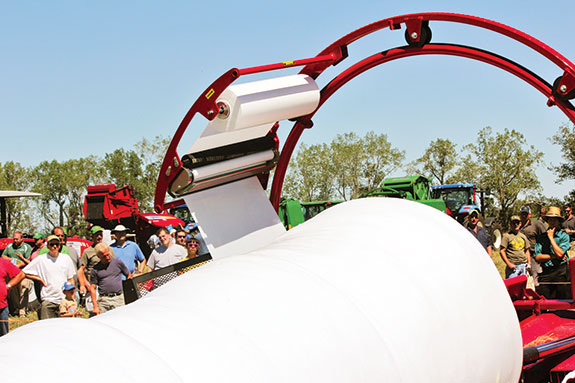
“Successful storage depends on many factors,” continues Shooter. “The storage site should be cleared of stubble and sharp objects.
Some people even lay an old piece of plastic on the ground before placing the bales. Rodents can chew through the plastic wrap or bag, which will greatly increase storage losses.
Spray the stack perimeter to kill weeds that harbor rodents and insects.
Do not cover the bales with an extra layer of plastic because it makes an ideal nesting site for rodents.
Find a shady area, preferably on a north-facing slope, to avoid temperature fluctuations that can degrade both the haylage and plastic.”
Feeding haylage is similar to feeding large round bales of hay in that conventional feeding rings can be used.
With the high investment in wrapping bales, it is essential to control feeding losses.
Some studies have shown up to a 50 percent loss when large round haylage bales are fed to cattle without being placed in a ring feeder.
This loss can be reduced from 10 to 20 percent by feeding in a ring. The use of an elevated hay wagon can reduce feeding losses to below 10 percent.
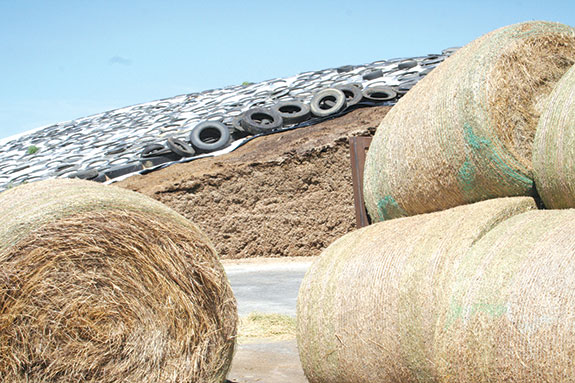
Silage
Silage is commonly made with corn or sorghum.
To economically use silage in a feeding program, you need to grow your own forage or contract with a nearby neighbor because hauling it long distances is expensive.
Capital required for building silos may be a limiting factor if these facilities don’t already exist.
Silage has to be handled as a bulk feed, so equipment to move the feed from the silo to pasture is required. Feed troughs are needed because silage cannot be fed on the ground.
One of the advantages of feeding good-quality corn or sorghum silage is that it is higher in energy than most hay and the cow’s energy requirements can be met with less total dry matter.
Selection of the type of harvested forage to stockpile for drought depends upon economics, available storage and adaptation to the management system. ![]()
Robert Fears is a freelance writer based in Texas.
PHOTOS
TOP: Hay is the most common type of harvested forage.
MIDDLE: Baled hay left in the field for extended periods loses nutrient and dry matter content.
MIDDLE: Hay should be fed in a ring, bunk or manger to minimize waste.
MIDDLE: Once haylage is wrapped, it is moved to the storage area with the same equipment used to move round bales.
MIDDLE: Haylage is formed into round bales and wrapped in plastic as part of the harvesting operation.
BOTTOM: Proper storage methods for haylage are similar to storage requirements for round hay bales.Photos courtesy for Progressive Cattleman staff.








